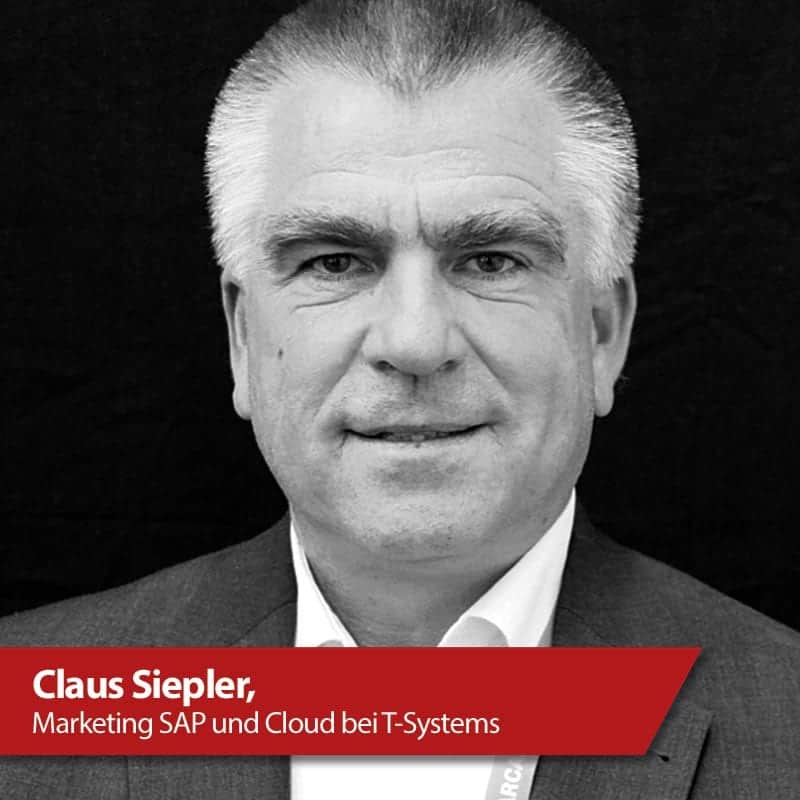Smart integration clears the way for resilient supply chains
![[shutterstock.com: 145192165, Lightspring]](https://e3mag.com/wp-content/uploads/2020/09/shutterstock_145192165.jpg)

The journey is the destination, and this also applies to supply chain management in particular. Hybrid cloud concepts create the necessary scope for a step-by-step expansion of modern SAP infrastructures. The control of supply chains and manufacturing processes, like the management of resources, is a complex task that is co-determined by numerous external factors depending on the size and radius of activity of a company.
According to a recently published study by the German Logistics Association (BVL), 87 percent of logisticians surveyed across all industries rate the opportunities presented by digitization as high or very high. In addition, around one-third already use sophisticated tools for data analysis. The Fraunhofer IPA study "Supply Chain Management 2040" also states:
"The efficient management of the entire future flow of goods poses the greatest challenge: lead times in supply chains must continue to shorten, which can only be achieved by consistently increasing efficiency and avoiding data disruptions."
It is therefore essential for future production and value creation scenarios to integrate processes in the procurement and processing of goods as seamlessly as possible. Whether supply chain management with SAP ME and the Digital Manufacturing Cloud or resource management with SAP C/4.
Suppliers and the manufacturing industry are digitally networked across the entire globe and are in continuous exchange with each other. A network that is fast and dynamic, but also susceptible to disruptions. Even minor supply bottlenecks can have a major impact on a company. In order to protect operations as best as possible, two key skills are required: On the one hand, it is important to identify any bottlenecks as early as possible - on the other hand, companies must be able to respond to disruptions on time.
In practice, fundamental questions such as the extent and scope of the failures or the possibilities of compensation through inventories play a role. Key figures must be recorded for all aspects. They form the basis for proactive warnings and meaningful reports, which in turn create the necessary framework for well-founded decisions.

Risk analysis needs clear targets
In-depth analyses are required to ensure that those responsible in the company have an overview at all times of the effects of supply bottlenecks and production disruptions on important economic parameters such as sales, margins and delivery capability. The better all production assets are integrated with operational applications and the database, the more meaningful the evaluation of delivery, process and production data.
When implementing new SAP environments, it is therefore essential to first record the as-is situation before the focus shifts to the targets relevant for monitoring and controlling supply and production chains in a second step. From the comparison of the status quo and the target definition, recommendations for action, overarching strategies, and roadmaps with clear prioritizations can be defined.
Bringing together data from all relevant segments provides the knowledge needed to respond quickly and efficiently. The central sources that should flow into overarching monitoring and analysis mechanisms include both the master data-carrying applications and third-party systems, machines, peripheral devices, and IoT modules. The SAP ecosystem provides all the necessary interfaces for this and thus creates the prerequisites for networking production and delivery-relevant apps with each other as well.
Interplay between cloud and IoT
One example of an effective combination of different technologies and intelligent data management is the Connected Greenhouse. Here, the integration is based on a hybrid cloud - in this case between the T-Systems Cloud of Things and the SAP Cloud Platform. IoT devices in the greenhouse collect data on the location, soil conditions, humidity or even the temperature of a specific planting.
This means that food logistics can be optimally managed from the time of harvesting through storage to delivery. All processes that are relevant in this scenario can not only be monitored, but also managed in the customer's backend. Thanks to the SAP Cloud Platform, users can react immediately to changes such as high pH values or insufficient moisture. The seamless supply chain extends all the way to the intelligent refrigerator, which records data on purchasing behavior.






